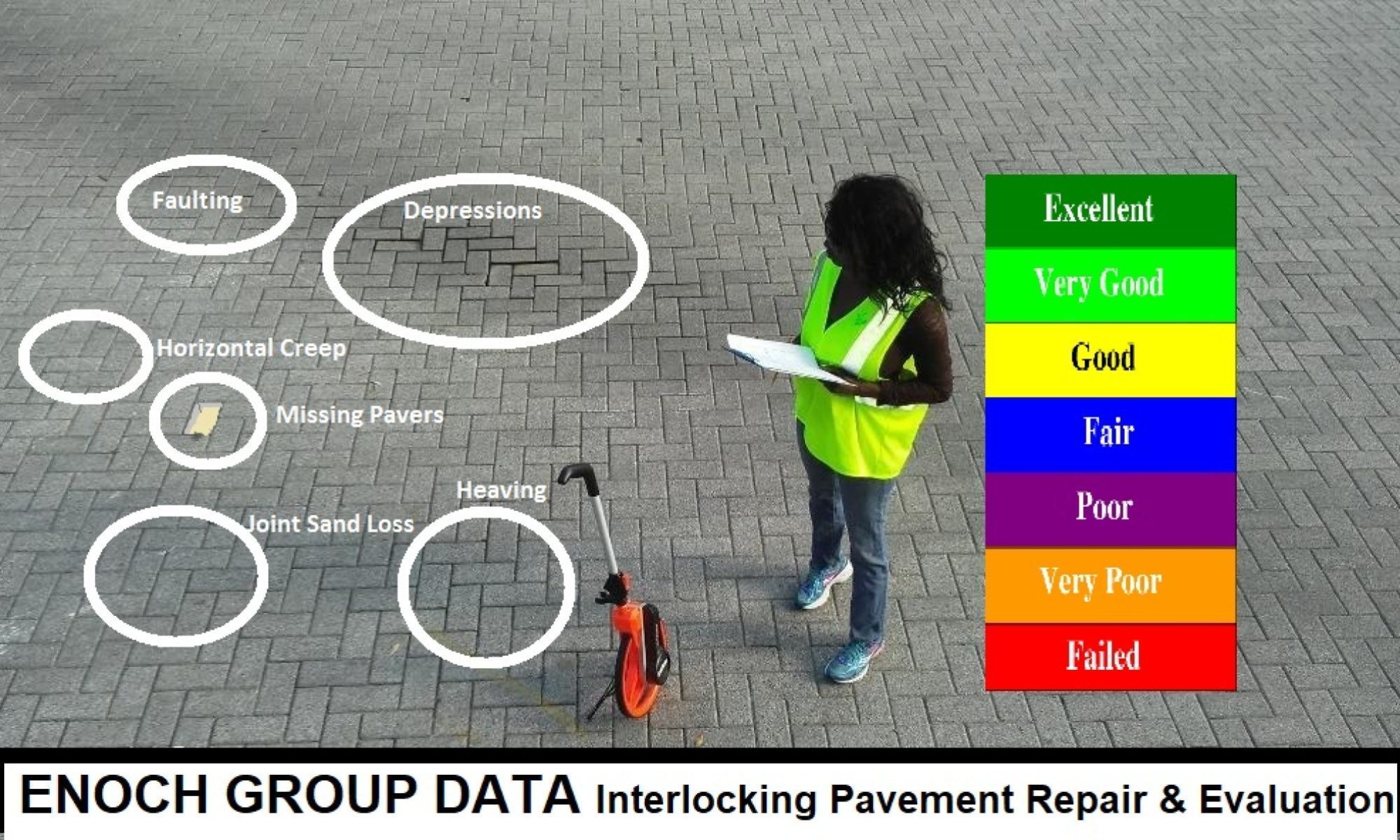Components Of Interlocking Pavement Systems
ENOCH GROUP Data, LLC dba Brick Paver Repair Houston evaluates and provides diagnosis of the entire interlocking pavement system, including the base structure, or in some cases, the lack of one.
One of the most overlooked components of interlocking pavement systems is the prepared base structure. Whether, be it a standard application or a permeable application, the base structure is the foundation that works together with other components including proper bedding and jointing material, edge restraints, paving units and friction.
Friction between adjacent paving units is a component which is greatly enhanced through application of jointing material. Proper joint fill between the units minimizes rotation (tipping over) of the paving units. When using aggregates of various sieve sizes as joint fill, the aggregates produce a ‘door wedge’ effect. In example, a door wedge placed on a floor underneath the door helps keep a door from moving due to its narrow area that fits under the door and its gradual thicker areas that brings the wedge to a stop as it is pushed under the door. Correspondingly, as smaller aggregates fill in and lodge between paving units, increasingly larger aggregates also fill in and lodge between the paving units. Compaction of the pavement surface drives the aggregates deeper and deeper into the joints where they are wedged in place due to friction. With proper edge restraints, the aggregates do not push the paving units apart but create lock up. Other Joint fill includes resins and polymers which stay in place within the joints by hardening.
Sometimes, the base structure is omitted and the result varies from minor to major distress. Sometimes, even with a prepared base, soil conditions beneath the base structure may be highly unstable. Clay rich soils can shrink and or crack open during drought conditions and swell upwards during wet seasons. This global stability issue can test even the best of prepared bases.
When all components of an interlocking pavement system (infrastructure) work together as designed, distresses are minimal. Aesthetics can be enhanced through cleaning and sealing.
Distress Surveys identify 11 distress types and 3 severity levels to produce an Interlocking Pavement Condition Index score for each section of interlocking pavement.
Distress Diagnostics identify the proximate cause of distresses. Regardless whether ENOCH GROUP, Data, LLC addresses the issue or not, a written report will be made available upon request.
Permeable Interlocking Concrete Pavement (PICP) Infiltration Rate Testing calculates the inch per hour amount of rainfall permeable pavement will absorb through its system.
Please contact us for a no obligation consultation

